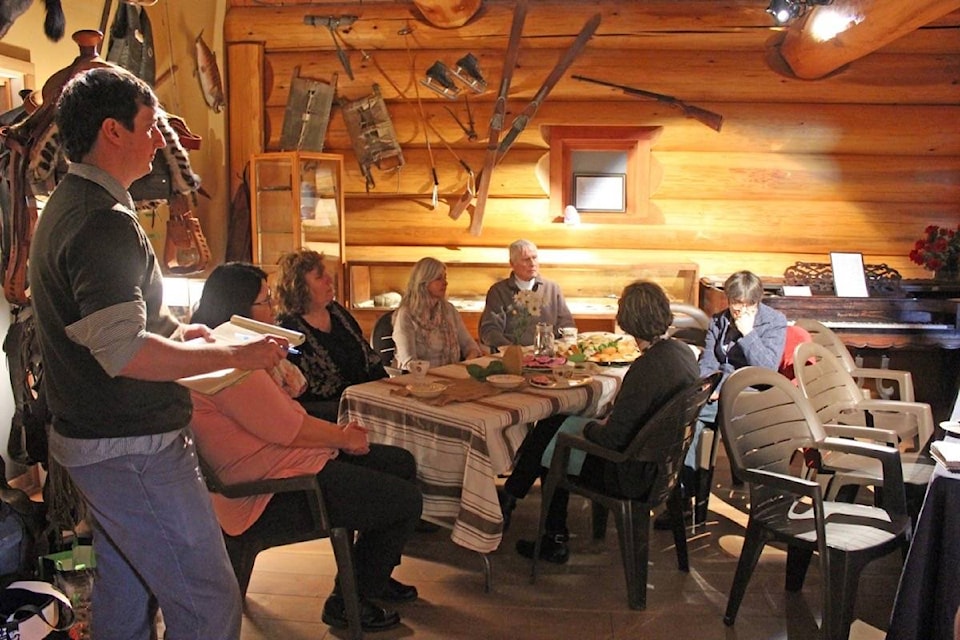Dining with a collection of china tea cups, mismatched silver spoons, and seated under an old (looking) log cabin, heritage enthusiasts gathered for an informal open table at the current location of the Museum of the Cariboo Chilcotin on Valentine’s Day.
Hosted by Mary Forbes of the Potato House, and Joe Borsato, co-ordinator at the Museum of the Cariboo Chilcotin, attendees were invited to share their hopes for the future of the museum.
Borsato talked about current plans the museum has for its temporary exhibit, including expansions in programming, displays and the potential to double or triple their display space in the coming months.
“We are really excited to tell more narratives about the region’s history in a way that is meaningful and in line with how narratives are told in museums around the world in the 21st century,” said Borsato.
Part of that, he said, is starting work on an exhibit about the residential school near town, and an ongoing consultation with Indigenous peoples in the area, beginning with the Northern Shuswap Tribal Council.
“We want to make our First Nations exhibits much more engaging, much more authentic and much more poignant,” he said.
He also has plans for exhibits on natural resources and how that use has changed over the past 100 years, as well as an expansion on the ranching and western themes the museum is well known for.
Including voices from the Station House Gallery, Quesnel’s museum (who also shares their building with the tourist information centre), the City of Williams Lake and other community members, the open table gave space for people to express their hopes for the museum.
Ideas that were brought forward included a number of collaborations between different organizations in the area.
This year will see the 75th anniversary of Williams Lake Stampede Royalty and next year will see the 100th anniversary of the Station House. Both expressed hopes to partner with the museum in telling their own stories.
Forbes told the group about her plan to create a kind of heritage tour endurance event through the Cariboo over the May-long weekend, bringing a number of the different organizations together.
Others expressed hopes the museum would include interactive exhibits, tell the stories of the individuals who have called the Cariboo Chilcotin home, or showcase the role women have played in the area.
Elizabeth Hunter, the manager of the Quesnel and District Museum, said the museum’s current location in the Tourism Discovery Centre is an opportunity.
“It’s a good opportunity to create partnerships with the people who are promoting your programs and the people who love your community, but another thing about the museum is that you are telling the story of the community to those who pass through.”
City staff re-emphasized their commitment to moving forward with the museum, who estimates they will be in the TDC for the next three to five years.
All in all, the “lovers of old stuff” enjoyed the conversation, networked and helped with visions for the future of the history of the Cariboo Chilcotin.
“We are storage places, but we are not. We are memory-makers, we are community-builders. We are that place where people walk in and they smell it, and they know,” said Forbes.
“There are so many amazing possibilities and really it is endless for us. I am very excited for the museum.”
